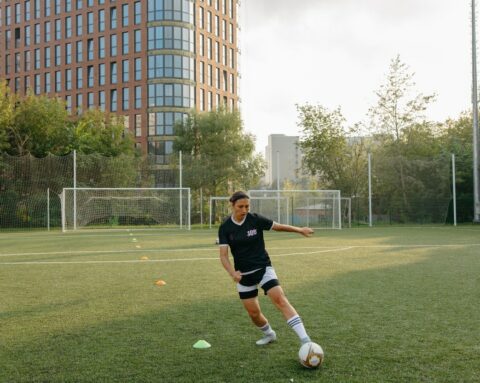One crucial aspect of your holistic health and wellness program will be to exercise regularly. This can
take many forms depending on your bodies level of capability. From taking up swimming to reduce
pressure on muscles and joints to high-intensity sprint interval training, there is an exercise option
for everyone. When exercising regularly you may find that your body takes longer to recover and is
generally sorer than you would like. One of the ways we can look to tackle this issue is with a
stretching plan specifically designed to target recovery and prevent injury.
To begin we must define all the various types of stretching that you may want to research for your
chosen sport and recovery plan. There are seven types of stretches including, dynamic, static,
ballistic, active, passive, isometric and PNF stretching. For the purposes of this blog, we are going to
focus on the two most common forms of stretches in dynamic and static stretching.
Static stretching refers to a single person stretching without the help of an object such as a wall. The
person extends the muscle to its farthest point and then holds the position. An example of a static
stretch is the standing quadriceps stretch where the individual stands upright and lifts their foot
from the top toward their glute. This is a static stretch when performed without the help of another
person or a wall/sturdy object. Dynamic stretching is defined as moving parts of your body and
gradually increasing the speed of movement, reach or both. This is often confused with ballistic
stretching; however, dynamic stretching involves restrained muscle movements that are within the
body’s natural capabilities. Ballistic stretching refers to pushing the muscles out of their natural arcs
with dynamic motions such as bouncing movements. An example of dynamic stretching would be
controlled leg swings or arm swings.
Now, we need to look at why we choose to stretch. Stretching has four major benefits including
improving joints range of motion, improving athletic performance, reducing injury and preventing
increased muscle soreness. Studies about stretching have had mixed results with some displaying
great results and some stating that stretching has little to no effect on preventing injury. The
consensus drawn from the majority of these studies is that long term stretching does, in fact, help to
prevent injury and improve athletic performance, however, static stretching before explosive based
performance such as sprinting can have a weakening effect on one’s power and speed. Taking the
time to stretch after your warm-up or exercise will lead to increased muscle flexibility over time thus
increasing range of motion and making you less receptive to pulled and strained muscles. In
particular, it is most important to apply static stretching techniques at the end of your work out for
an optimal recovery process.
There are some very important concepts to observe when stretching. Think of these as your
stretching essentials to ensure you don’t cause further stress to your body when exercising. The
number one most important aspect of stretching is to ensure that you use proper technique.
Incorrect stretching can be harmful to your muscles. Also, if you are currently injured it is important
not to put to much pressure on your body.
One of the most common myths of stretching is that it is to be done within or in place of the warm-
up. Particularly in the case of static stretching, this should only be undertaken after the body is
already warm. It is possible to use similar movements that you would undertake in a game through
dynamic stretching during the warm-up but these should be done very carefully in controlled
movements. If you wish to stretch before you conduct your proper workout it is important to warm
your muscles up with 5-10 minutes of light cardio such as jogging.
When stretching in preparation for your activity it is important to prioritise dynamic stretching
routines. Not to be confused with ballistic stretching, try to incorporate movement into your
stretches. Gentle controlled movements that gradually transition into your in-game level of
performance are the best practice. For example, gradually stretching your legs by practising kicks for
soccer through leg swings. When performing these exercises, make sure that your body is being
thoroughly and symmetrically stretched. Ensure you stretch both the left and right side of your body
to lower the risk of injury.
One potential risk factor to look out for when stretching is tight muscles. If you feel that your bodies
muscles are a bit tight on the day it is important to gradually stretch the muscle out more slowly and
not to force it if it seems overly tight. A tight muscle may be a sign that your body needs excess rest
so monitor accordingly. Be wary of any chronic injuries that may flare up during your work out or
stretching period and ensure they are reacting well to your exercises. Finally, when you are
attempting exercise that involves a lot of explosiveness and power, there is research to suggest that
stretching before may do you more harm than good. It has been proven that the body is less able to
perform explosive movements after stretching.
If you are looking to take your recovery, work out and exercise plans to the next level then Studio
Musculoskeletal would love to assist you in creating an appropriate stretching plan focused on
reducing the chance of injury. Our expert therapists will guide you through a complete plan to allow
you to perform at your peak and recover faster!






